Archive for ‘Charitable’ Category
24 Smart Ways to Get More Organized and Productive in 2024

Happy New Year! Happy GO Month!
January is Get Organized & Be Productive (GO) Month, an annual initiative sponsored by the National Association of Productivity & Organizing Professionals (NAPO). We professional organizers and productivity experts celebrate how NAPO members work to improve the lives of our clients and audiences by helping create environments that support productivity, health, and well-being. What better way to start the year than creating systems and skills, spaces and attitudes — all to foster a better way of living?!

To start GO Month, today’s I’m echoing Gretchen Rubin’s 24 for ’24 theme that I mentioned recently, and offering you 24 ways to move yourself toward a more organized and productive life in 2024. There are 23 weekdays in January this year, so if you’re feeling aspirational and want to conquer all of these, you can even take the weekends off as the last item is a thinking task rather than a doing task.
I broke these organizing and productivity achievements down by category, but there’s no particular order in which you need to approach them, and certainly you don’t need to accomplish every one on the list, in January or even all year. Jump in and get started — some only take a few minutes.
PUT LAST YEAR AWAY
1) Make many happy returns!
Did you know that shoppers will return $173 billion in merchandise by the end of January? Chances are good that you (or someone for whom you oversee such things) got gifts that need to be returned.
Don’t put it off. The longer you wait, the more clutter will build up in your space, and the more likely you will be to suffer clutter-blindness until the return period has expired. Most stores have extended return policies during the holidays, but they can range upward from 30, depending on whether you have a gift receipt.
The Krazy Coupon Lady blog reviews the 2024 return deadlines for major retailers. She notes that you’ll get your refunds faster by returning items to the brick & mortar stores rather than shipping them back. You’ll also save money, because some online retailers charge a restocking fee.
2) Purge your holiday cards.
While tangible greeting are getting fewer and farther between, you probably still got a stack. Reread them one last time, and then LET THEM GO.
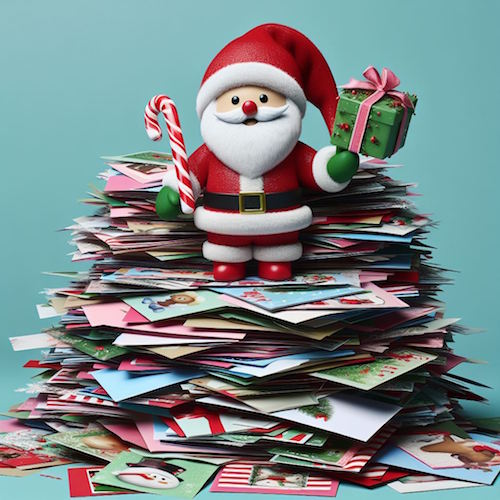
Did Hallmark or American Greetings do the heavy lifting, and the senders just signed their names? Toss them into the recycling bin. Paper Doll‘s grants you permission to only save cards with messages that are personal or resonant.
If they don’t make you cry, laugh, or go, “Ohhhhh,” don’t let them turn into the clutter you and your professional organizer will have to toss out years from now when you’re trying to downsize to a smaller home! It’s a holiday message, not a historical document; you don’t transcribe your holiday phone conversations and keep them forever, right?
The same goes for photos of other people’s families. You don’t have to be the curator of the museum of other people’s family history; let them do that.
3) Update your contacts.
Before you toss those cards, check the return addresses on the envelopes and update the information in your own contacts app, spreadsheet, or address book.
Next, delete the entries for people you’ll never contact again — that ex (who belongs in the past), that boss who used to call you about work stuff on weekends (ditto), people who are no longer in your life, and those who are no longer on this mortal coil.
If you don’t recognize the name of someone in your contacts, Google them or check LinkedIn (is it your mom’s doctor? your mechanic?) and if you still don’t know who it is, you’re obviously not going to be calling or texting them. Worst case scenario, if they text you, you can type back, “New phone, who dis?”
BOX UP YOUR INBOXES
4) Delete (most of) your old voicemails.
How often do you return a call only to hear, “The voicemail box is full and is not accepting messages. Please try again later.” When someone calls you and requests you call them back but their voicemail is full, it’s frustrating because it makes more labor for you.
Do you assume that it’s a cell phone and text them? (I believe texting strangers without permission is a breach of etiquette.) Plan to call back later? Assume that they’ll see the missed call and get back to you, starting another round of phone tag? ARGH!
Dial in to your voicemail and start deleting. Save phone numbers for anyone you’ll need to contact and log anything you may need to follow up on. But unless you’re saving a voicemail for legal purposes or because you can see yourself sitting in an airport, listening to a loved one’s message over and over (cue sappy rom-com music), delete old voicemails.
If you’ve got a landline, clear that voicemail. If you’ve still got an answering machine, how’s the weather in 1997? Yeah, delete old messages.
Smith.ai has a great blog post on how to download important voicemails (from a wide variety of phone platforms) to an audio file. Stop cluttering your voicemail inbox!
5) Clear Your Email Inboxes
Start by sorting your inbox by sender and deleting anything that’s advertising or old newsletters. If you haven’t acted on it by now, free yourself from inbox clutter! Delete! Then conquer email threads, like about picking meeting times (especially if those meetings were in the past).
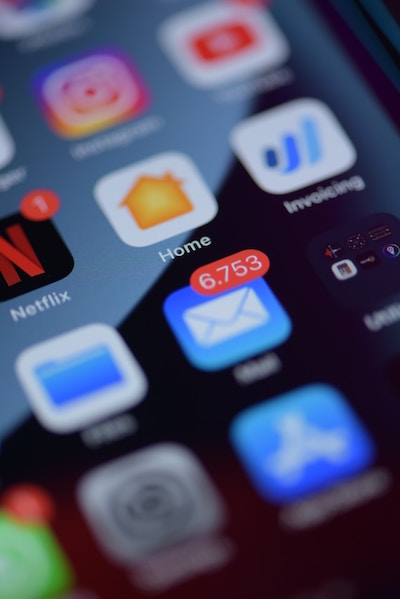
Take a few minutes at the end of each day to delete a chunk of old emails. To try a bolder approach, check out a classic Paper Doll post from 2009, A Different Kind of Bankruptcy, on how to declare email bankruptcy.
6) Purge all of your other tangible and digital inboxes.
Evernote has a default inbox; if you don’t designate into which folder a saved note should go, your note goes somewhere like Paper Doll‘s Default Folder. Lots of your note-taking and other project apps have default storage that serves as holding pens. Read through what you’ve collected — sort by date and focus on the recent items first — and either file in the right folders or hit delete!
Walk around your house or office and find all the places you tend to plop paper down. Get it in one pile. (Set aside anything you’ll absolutely need in the next few days to safeguard it.) Take 10 minutes a day to purge, sort, and file away those random pieces of paper so that you always know where they are.
HIT THE PAPER TRAIL
7) Embrace being a VIP about your VIPs.
You need your Very Important Papers for all sorts of Very Important Reasons. If the last few years have proven anything, it’s that life is unpredictable, so we need to find ways to make things as predictable and dependable as possible.
Yes, putting together essential paperwork isn’t fun. It’s boring. But you want it to be boring. The more boring your vital documents are, the more it means there will be no surprises for your loved ones in troubling times (like during and after an illness, after a death, while recovering possessions after a natural disaster) or even when you’re just trying to accomplish something like getting on an airplane.
Start with these posts, then make a list of any document you already have (and where it is), and another list of what you need to create, and plan meetings with your family and a trusted advisor to set things in motion.
How to Replace and Organize 7 Essential Government Documents
How to Create, Organize, and Safeguard 5 Essential Legal and Estate Documents
The Professor and Mary Ann: 8 Other Essential Documents You Need To Create
Paper Doll’s Ultimate Guide to Getting a Document Notarized
Paper Doll’s Ultimate Guide to Legally Changing Your Name
A New VIP: A Form You Didn’t Know You Needed
8) Create your tax prep folder now so you’ll be ready for April 15th.
Do you toss non-urgent mail on top of the microwave? Might those important 1099s and 1098s and 1095-A and W-2s get lost? Don’t lose deductions, pay more taxes, or get in trouble with the IRS!
By the end of January, you’ll start getting tax documents in the mail. Pop them in a folder in your financial files or in a dedicated holder like the Smead All-in-One Income Tax Organizer.
Paper Doll’s Thanksgiving Week Organizing and Productivity Buffet
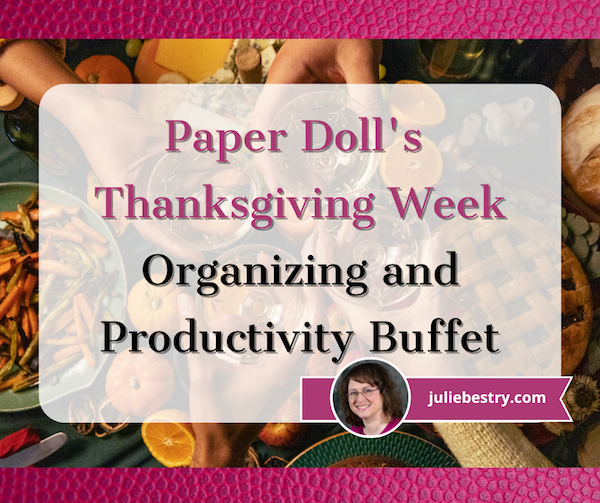
Whether you’re getting ready to go over the river and through the woods, hosting a Thanksgiving celebration of your own, or stuck (in an airport or at home) with too little to do, today’s post is for you.
I’ve created a Thanksgiving buffet from which you can take some tastes and figure out what you like. Decide for yourself whether to categorize any of these as appetizers, entrées, sides, or desserts. There’s nothing serious to require your deep attention, so just nibble as though you were sneaking through the kitchen on your way to watch the parade.
GRATITUDE AND A FOLLOW-UP ON THE CAR THEFT
If you read my August post, Organize to Prevent (or Recover From) a Car Theft, you know that I was a victim of the Kia Boys, young miscreants across the United States who steal KIAs and Hyundais, not for financial gain but for “street cred” or thrills. It’s my philosophy that almost anything bad from which you recover makes a good anecdote (or blog post), but the lesson of preventing car thefts and recovering from them is one I’d have preferred to research online rather than personally experience.
The indignities of being a victim of theft did not stop with the recovery of my little red PaperDollmobile. Due to a turf war between towing companies, miscommunication at the body shop, an utter failure of professionalism on the part of someone we’ll call the Jerky Insurance Dude, and a series of back-ordered parts (mostly due to the mass of Kia and Hyundai thefts nationwide), it took two months for my car to be repaired and returned.

Just a few weeks ago, the federal judge who initially refused to approve the $200 million class action settlement against Kia and Hyundai because it wasn’t supportive enough of victims has acknowledged the revisions to the settlement and approved it. It will likely be years before we victims see those compensatory funds (almost certainly be reduced by attorney and court costs), but the resolution is something else for which I can be thankful.
Meanwhile, if you haven’t read the original post, or if you’d like to hear more of the updates, or if you just prefer a good chatty tale, friend-of-the-blog Dr. Frank Buck recently had me on his podcast in an episode entitled From Chaos to Clarity: A Professional Organizer’s Car Theft Journey.
Frank and I discussed many of the concepts in my blog post, but also expanded upon teh experience. We talked about handling the unexpected, and how to deal with shock of a situation but still capture the essential information in order to survive and get to the other side. Professionally and personally, Frank and I can attest to the essential role of good note taking during any emergency or catastrophe.
If you watch the podcast on video, above, and please leave a comment or “like” on Frank’s YouTube page. Or, if you’re driving somewhere this week and need to drown out the “Are we there yet?” whines punctuated by kicks to the back of your seat, you can listen to my episode of Frank’s podcast on Apple Podcasts, Google Podcasts, Spotify, Overcast, Castbox, and pretty much wherever you get your pumpkin-spiced podcasty goodness.
HOW TO SHOW GRATITUDE FOR OUR BOUNTY
“There is no product or service more ecological, sustainable and recyclable as the one we do not use.”
— Philippe Bihouix, engineer and author of The Age of Low Tech: Towards a Technologically Sustainable Civilization
This quote, included in Sunday’s Cool Tools Lab’s Recommendo newsletter, was certainly well-timed.
What a perfect way to show gratitude for the bounty in your life by using the week ahead to identify what you’re not using or wearing and earmark those items for donation.
Thanksgiving is an ideal time to discuss with your children the concept that not everyone has as much, and help them consider the toys and games they’re no longer enjoying. It’s a great way to be responsible to the planet, their fellow humans, and their own home.
And what better way to teach your children than by example?
Last Friday, I gave one of my signature speeches detailing all the reasons why it’s difficult to let go of possessions. I talk about how we sit on our “Buts” (one T) as in, “I’d let go of it…but it was expensive.” Or, “I’d let go of it, but it was a gift.” In part of that presentation, I noted that one of the big “buts” in letting go of excess is “But I want to find the perfect home before letting go.”

People Working at Donation Center Photo by Gustavo Fring via Pexels
We hate spending the time, money, and effort to keep what we don’t want or need, but we hate the idea of “wasting” perfectly good items more, as if languishing in OUR basement is a better fate for something than ending up with (an unknown) someone whose worth we can’t know or judge.
So, we decide that as soon as we find the perfect place for an unused table to go, we’ll send it on its way, but either we don’t know about available resources (like a furniture bank or Habitat for Humanity’s Restore) or we never go all the way from making the decision to actually getting it out of our homes. Take comfort that whether you recycle, donate, or sell, letting go of what you never use has three benefits. It means a good home for the item, joy for the new owner, and more space for you.
As we say in professional organizing, done is better than perfect!
GET CRAFTY ABOUT REDUCING YOUR CRAFT STASH
Speaking of getting rid of excess for purposes of sustainability, my fabulous friend and colleague Janice Simon of The Clutter Princess brought my attention to a nifty option for all of you crafty (and aspiringly crafty) folks.
Destashify is your resource for letting go of the excess cloth- and needlework-adjacent craft supplies you have on hand. It’s a bit of crafting thrift shop. In their words: Destashify is dedicated to keeping sewing, quilting, knitting, crochet, and other wearable art supplies out of landfills.
Destashify will sell, recycle, or donate your excess crafting supplies to individuals or organizations who will make use of you letting them instead of letting them pile up in the corner.
Obviously, if you actively work on your crafts, nobody would encourage you to stop. But if you have piles of these kinds of supplies, either in your own space or the space of someone you have responsibility for maintaining, Destashify offers a few nifty options.

Destashify, Filtered for Purple Yarn
Sort through your materials and collect any unwanted fabric, patterns, yarn, trim, and notions. If you have books, magazines, or DVDs on sewing, quilting, or related crafts, as well as patterns or even machinery (like sewing machines, accessories, and software), add them to your outgoing stack. Now, you have two options.
Sell Your Craft Supplies via Destashify
If you sew, quilt, knit, or are otherwise a “fiber artist,” you can destash (that is, declutter your stash), start a side hustle to fund your hobbies or life, or expand any craft-related existing business with a new outlet.
- Create a Destashify seller’s account and list your items for sale.
- Fulfill orders made through the Destashify site.
- Receive payment through either Venmo or Paypal.
Destashify charges no up-front costs to sellers. If you sell supplies via Destashify, they keep $1 + 15% of the remaining product subtotal. Beyond that, they charge no extra listing fees or payment transaction fees. If any of your items fail to sell, they won’t charge you anything for the listing (or re-listing). Buyers pay one flat fee for shipping, and sellers retain 100% of the shipping fee, but are responsible for the actual shipping costs.
Donate Your Craft Supplies to Destashify
If you donate your craft supplies, Destashify will pay for the shipping! (Note: Destashify is not a 501(c)(3), so you can’t deduct the value of your donation on your taxes.)
Destashify may donate your donations to organizations, like schools, or sell to fund operations. As when you donate anything, make sure your supplies are in good, clean condition. They can be related to: sewing, quilting, knitting, crochet, weaving, embroidery, tatting, upholstery, and home décor. Gather them up in a box (or boxes) and then:
- Click on the “contact us” link at the bottom of every page of the Destashify page and tell them that you want to donate.
- Once you provide your shipping address and phone number, Destashify will send you prepaid shipping labels (with the information you provide as the label’s return address).
- Include the height, width, and depth dimensions, as well as the weight of each package you want to send. (Limit your shipping box dimensions to under 19 inches.)
They require a minimum of one yard of apparel fabrics or 1/4 yard for quilting fabrics. Leather, suede, and fur are accepted, as is yarn. Notions include doohickeys like thread, elastic, and grommets, while fastenings are, as you might guess, things that let you fasten clothing, like snaps, buttons, or zippers. Destashify will also accept small tools, like rulers, scissors, and awls.
However, they are unable to accept donations that are heavy or oversized, requiring excess storage space or egregious shipping costs. So, please don’t donate big storage or furniture items like cabinets or sewing tables, nor heavy machines like sewing machines or sergers. (You can list them for sale through Destashify, though!)
Watch two of the Destashify-ers talk about craft donation hauls here.
Destashify is a young venture, so they currently only support U.S.-based sellers; they are able to ship to buyers in Canada and the United Kingdom.
Finally, if your craft area is nicely pared down and organized, and you’re interested in buying from Destashify, just click on any menu and use the left-side panel to filter for things like color families, fabric types, fibers, patterns, garments and garment types, weights, and more.
PUT THE KIBOSH ON COAT CLOSET KERFUFFLES
Longtime readers of the blog know that I’m not one for recommending unnecessary products, and I don’t usually mention products that are too far afield from organizing your paper, information, and productivity. And I definitely avoid recommending products before they’re entirely on the market. However, when things come across my TikTok feed that make me sit up and take notice, I want to share them with you.
Swedish inventor and YouTuber Simone Giertz has developed Coat Hingers, and no, that’s not a typo. Giertz’s Kickstarter was seeking $50,000 to manufacture foldable hangers to allow for clutter-free storage in shallow closets and narrow spaces. In the first two days, she not only hit her goal, but exceeded it! Now, with 26 days remaining in her Kickstarter month, she’s already garnered $255,984 in pledges from 1940 backers aspiring to own the product.
Unlike the kind of foldable hangers designed to be used in luggage, Giertz found no solutions for folding hangers meant to actually be hung in closets, particularly shallow ones. So, she created her own, developing prototypes of hinged hangers.
You just put your article of clothing on the hanger, fold at the hinge, and now you’ve got the ability to store the shirt (or whatever) in half the depth.
Whereas traditional hangers measure about 17 1/2 inches, horizontally, Coat Hingers fold to take up just 9.3 horizontal inches. The hingers are made of stainless steel hangers with injection molded acetal hinges for durability.
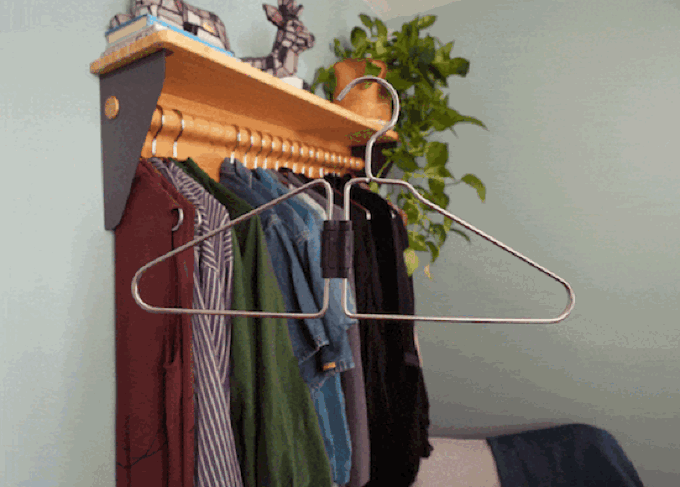
Supporting Giertz at this point is a pricey, but if you’re in a small space and are likely to be there a while, it’s worth considering. One Coat Hinger is $20, and a dozen are $75.
Because Coat Hingers need to be a certain distance from the wall, they recommend that in lieu of off-the-shelf (no pun intended) closet rods, you make the rods in their kits, which come in four different color schemes (charcoal, white, red, and green). The shelf kit is $270, while the small bracket kit is $135 and the large is $200. The shelf kit and large bracket kit come with two dozen Code Hingers; the small bracket kit comes with one dozen.

All Coat Hingers come with a set of silicone stoppers that slide along the diagonal arms of the hanger to keep items with low necklines or thin straps from sliding off of the hanger.
Unfortunately, Kickstarter videos aren’t shareable. (Why?! Social sharing would bring in so many more backers?) However, Giertz’s YouTube channel has a great video on how her product came to be that will give you a good sense of what she’s creating.
(Did you notice that it’s pronounced coat hinge-er, accenting the hinge, rather than coat hing-er to sound like hanger?)
When I was in graduate school, I lived with six other students in my program in a scary green Addams Family-esque house with squirrels in the attic. Due to the luck of the draw, I got one of the larger bedrooms, but the closet was minuscule, slightly smaller than a telephone booth, with the sole rod positioned on the diagonal. Hanging clothes in that shallow a space was almost an impossibility, as was keeping any kind of order. I would have loved Coat Hingers back in 1990!
DE-STRESS THE HOLIDAY SEASON FROM THE START
Thanksgiving is the official start of the holiday season, which means it can also be the start of the stressed-out, exhausted season as well. I’ve got two resources for you for keeping your season on an even keel.
First, the theme of Janet Barclay’s November Productivity and Organizing Carnival is Stress-Free Holidays. It includes 15 posts from my fabulous colleagues for helping you deal calmly with planning and organizing your season and getting the self-care you need.
Then, you might want to pick up a copy of my classic season-smoother, Simplify the Season and Save Your Sanity so that you can thrive, and not merely survive during the upcoming holiday season.
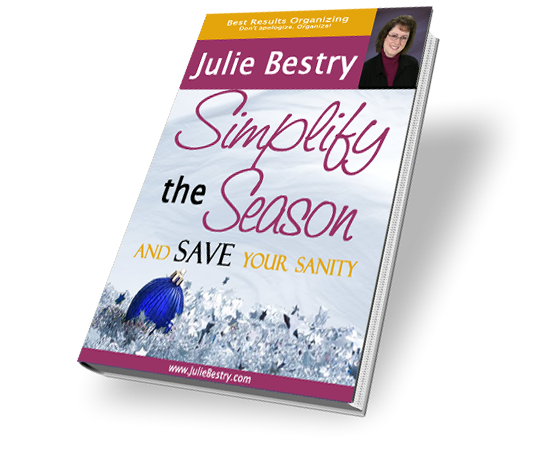
Are you so frazzled by mid-December that your nerves start to feel like tangled Christmas lights?
Have visions of sugarplums been replaced by nightmares of long lines and traffic jams?
Does that Thanksgiving turkey remind you of a time bomb, ticking down to the big day in December?
If so, Simplify the Season and Save Your Sanity may be exactly what you need.
PLAN FOR A SANE RE-ENTRY NEXT WEEK
Heading back to work after a long Thanksgiving weekend can be overwhelming, and it can be tempting to try to barrel your way through the work. However, back in October, we talked about the importance of taking time away from your desk to refresh, whether short-term or long-term.
Take a Break — How Breaks Improve Health and Productivity
Take a Break for Productivity — The International Perspective
After you revisit these posts, you may want to read this piece from The Muse, Take Five: 51 Things to Do When You Need a Break at Work.
I’d explored a variety of break options, but some readers mentioned that they often feel guilty taking breaks that “looked” lazy, as if doing healthy things for your body, brain, and spirit somehow lacked worth. (Remember Paper Doll telling you this: you are not your job or your role. Your worth does not come from what you do. It’s innate to who you are!)
The genius of this Muse post is that it offers some fun suggestions, links, and resources for digging deeply into categories of breaks that still accomplish something, in case you’re still working on accepting yourself even when you’re not entirely in worker-bee mode. The categories are:
- Energizing
- Brain-Boosting
- Social
- Productive (It won’t surprise you that this is my favorite category of tips!)
- Career-building
- Relaxing
- Downright Distracting
My favorite, given that we’ll have just come out of Thanksgiving, is #18:
Send a thank you note to someone who’s helped you out recently—your assistant who’s gone above and beyond or a co-worker who proofread a report for you. It doesn’t even have to be something big—in fact, bonus points if it’s not.
And with that, kind readers, I thank you for reading, commenting, and sharing. May you and your families and friends have safe travels and a happy, healthy Thanksgiving.
Paper Doll Wraps Up, Declutters, and Updates 2020

It’s been quite the year. “Unprecedented,” you might say. (Or, better yet, let’s not say. How about we purge that word from our vocabulary?) Before we turn the calendar page to 2021, there are a few additions and updates for the posts you read (or might have missed) over the past year.
PANDEMIC PRODUCTIVITY
The Now Normal: When the New Normal Changes Quickly
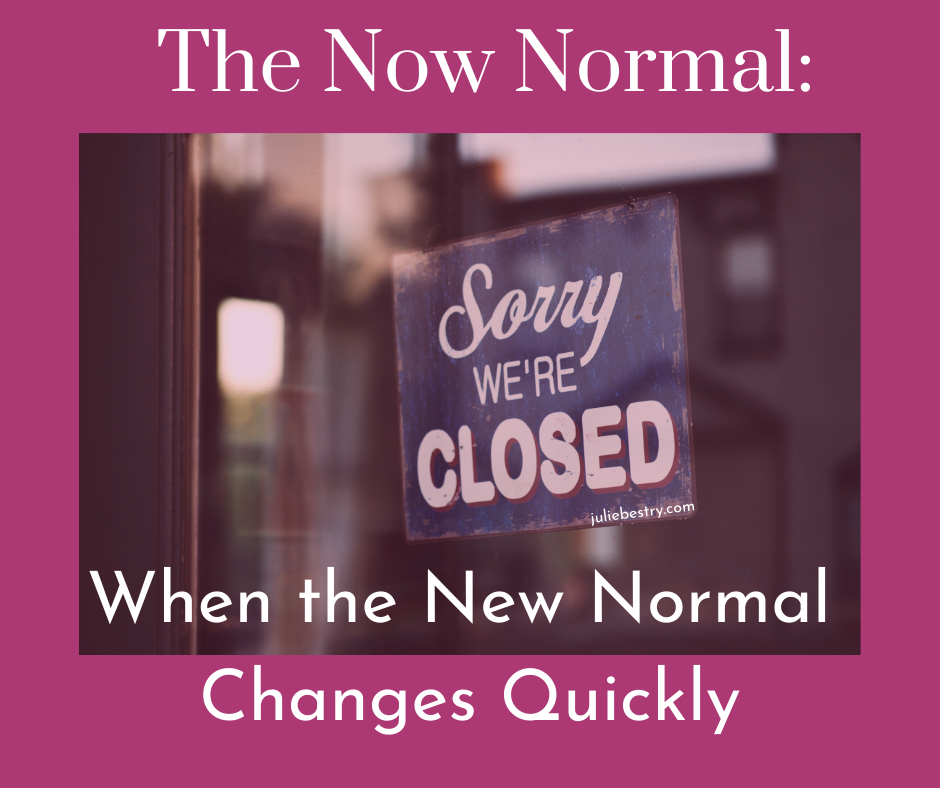
Back in March, none of us knew what the next nine months would bring. I’d acknowledged the difficulty of being at home, whether that meant working from home, home-schooling, or dealing with family and their foibles 24/7, and noted that at least, to some extent, we’d get used to it, or at least we’d have to get used to the “Now Normal” of things constantly changing and us not getting used to things. Little did we know how long (how very, very long) we’d be getting used to things constantly changing. I gave you all permission (as much as anyone needs permission from random internet bloggers) to be OK with not being OK.
Now, on the cusp of 2021, there’s light (in the form of a vaccine) at the end of this tunnel. But I suspect things will never go back to exactly where they were. Remote work had already been increasing (by 173% between 2005 and 2018); 2020 gave companies the impetus to make this a more permanent option. Companies that had believed workers could never be as productive when working remotely found that the opposite was true. According to research collated by Apollo Technical:
- Performance can improve up to 13% when working remotely (in a quieter, more convenient workspaces)
- Remote work yielded greater worker satisfaction
- Remote workers spend 15% less time avoiding work tasks
- Anecdotally, once supervisors trust the work-from-home approach and stop micromanaging, productivity increases.
This doesn’t mean we can extrapolate only good things to come out of more people working from home. Even once children and life partners are no longer in the home/work space, the distractions of household tasks (especially for women) will likely adversely impact productivity, and research indicates that productivity may take a hit due to prolonged lack of social interaction (especially for extroverts, like moi).
Some workplaces will stay 100% remote; others will return to traditional venues; and I suspect many employees will demand greater flexibility, and companies will want to consider the reduced overhead associated with smaller (or no) dedicated offices. The only thing we know for sure is that things will continue to change, and we’ll have to be nimble, accepting that the sand will keep shifting under our feet. As L.P. Hartley once wrote, “The past is a foreign country; they do things differently there.”
The only thing we know for sure is that things will continue to change...As L.P. Hartley wrote, 'The past is a foreign country; they do things differently there.' Click To TweetPaper Doll’s Ultimate Guide to Organizing a Virtual Field Trip
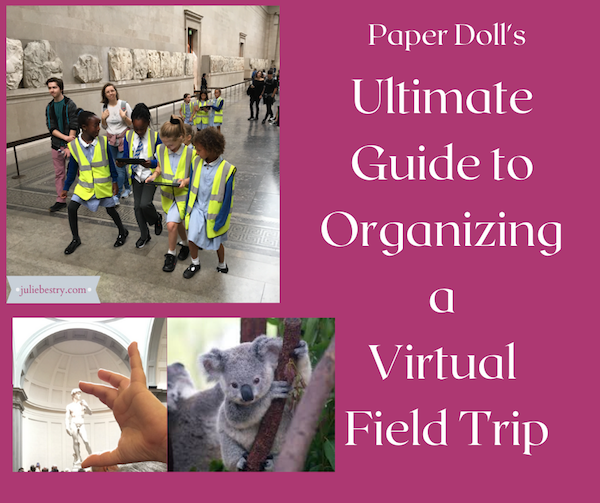
This post proved to be one of the most popular during the early pandemic. Organizing our days to include breaks, including virtual day trips to escape monotony, became a necessity this year, and rarely a week went by when a reader did not email or tweet or post to tell me about other cool virtual field trips.
Friend of the blog Janet Barclay knows that Paper Doll is a consummate Jane Austen fan, and forwarded Celebrate Jane Austen’s Birthday With a 360-Degree, Interactive Tour of Her House, and from there it was a quick hop, skip, and virtual jump to the Emma Thompson-narrated Twelve Days of Christmas special. There are also paid live virtual tours of Jane Austen’s House from Home, trails, and exhibitions. (Two live tours in January each go for £5, or about $6.78).
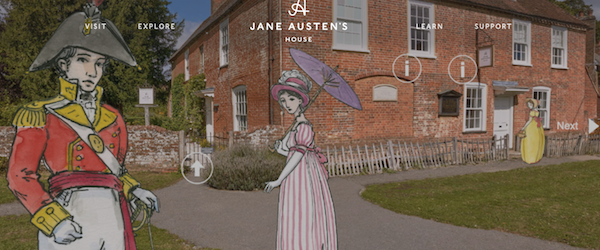
Discovery Education has developed a variety of live and on-demand, family-friendly interactive field trips. Each is free and includes a companion guide with hands-on learning activities! Take your kids to “visit” the Johnson Space Museum in Houston, see the cars of the future, hobnob with polar bears in the Tundra, and so much more. Whether you need a virtual field trip to break up winter vacation, quell home-schooling doldrums, or reverse just too little play time, Discover Education is a delightful addition to the options in my post.
Perhaps you binged too much of The Crown and need a reality check? Take a virtual tour of Buckingham Palace. Prefer a different venue? How about the Taj Mahal, the White House, or the Vatican?
Virtual Museums started an interactive map of the world’s museums available to virtual visitors. (Create an account to track and rate your visits.) From the Canadian Museum of Human Rights to South Korea’s National Museum of Modern and Contemporary Art to the mysterious fossils of the Graz Natural History Museum in Austria, new field trips for grownups are appearing all the time.
And if you need the the kind of field trip that takes you away from the hubbub, Escapista may be to your liking. Escapista has developed a manifesto to explain its approach to selecting opportunities for immersive meditative experiences, from pausing by a snowy river to Norway’s “Slow TV” experience of ten hours on a train. (Click the speaker icon to turn on the audio.)
Be sure to organize time in your life to relax and to learn for fun.
Does Anybody Really Know What Time It Is? 5 Strategies to Cope With Pandemic Time Dilation

There’s an irony of mentioning time dilation between two long weekends marked by Christmas and the new year. I’ve lost count of how many people have told me they checked for the mail on Friday or took the trash to the curb on the wrong day.
In the original post, I explained why our body clocks became so borked during our quarantine and recommended five strategies, with LOTS of tactical suggestions, for keeping everyone from becoming unstuck in time:
- Put structure in your life.
- Enhance novelty.
- Create vivid sensory clues for the passing of time!
- Get what you know you need! (Daylight, sleep, exercise, and for those of you who’ve had the same pair of sweats in rotation since St. Patrick’s Day, get dressed!)
- Take a technology break.
As a professional organizer and productivity coach, my job is to help people get more out of their time. But efficiency isn’t everything. In a year like we’ve had, and going forward, some daydreaming and navel-gazing preserves sanity. If you find yourself losing track of time too often, add in a bit of structure to your day and use technology to get a quick “beep-boop.” But do give yourself permission to enjoy the one small benefit of this year, living by your natural body clock.
Organize Your Health: Parental Wisdom, Innovation, and the New Time Timer® Wash

Don’t touch your face. Wear a mask. Wash your hands. It’s good advice, so listen to your mom. Listen to mine.
READING RENEWAL
12 Ways to Organize Your Life to Read More — Part 1 (When, Where, What, With Whom)

I’m not the only embracing tips for reading more. Oprah, the ultimate book club leader, may have ended her print magazine, but the December issue offered up 20 Simple Ways to Read More and Enjoy More Books in 2021. (Personally, though, I preferred my take on developing a reading nook. What do you think, readers?)
12 Ways to Organize Your Life to Read More — Part 2 (Reading Lists, Challenges & Ice Cream Samples)

Want to read more in 2021? You’ve got a bounty of options for finding recommended reading lists. One of my favorites is the NPR Book Concierge. (Find annual suggestions going back to 2013.)
If, instead of looking for a specific title, you want to find a 2021 reading challenge that, well, challenges you, opportunities abound, including:
The Uncorked Librarian (Most intriguing suggestion: read a book set on a train.)
Modern Mrs. Darcy (This year, it’s not just reading prompts, but an entire interactive kit for creating your personalized reading life!)
GirlXOXO Master List of Reading Challenges (While I’ll skip the challenge to read mysteries with cats as main characters, there are certainly lists galore for every taste!)
Meanwhile, who would be up for a Paper Doll reading challenge to embrace books on organizing and productivity?
How To Make Your Reading Time More Productive With Book Summaries

My coverage of book summaries focused on non-fiction. Unless you’re in 11th grade English class (sorry, kids), you probably don’t want summaries of novels. However, you can get ice cream tastes of fiction, to see if you like an author’s style.
- Most people are familiar with Amazon’s “Look Inside” feature, which allows you to click a link above the book cover and read a handful of pages. But did you know that many Kindle books have “Send a free sample” link so you can preview chapters? Check in the browser version, not the app, below the “purchase with one click” section and above the “add to list” button.
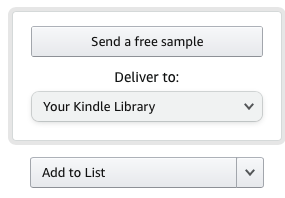
- You can also get a free audio sample. Check for a link under the book cover.

- Literary Hub has daily offerings of novel excerpts. Click on the book cover you want to try, and the resulting page provides short author bio and a selection from the novel. Titles range from new releases, like Mrs. Murakami’s Garden, to reprints of classics, like Betty Smith’s Tomorrow Will Be Better. (Literary Hub also has short stories excerpted from short story collections.)
PAPERWORK DECLUTTERED
Organize for an Accident: Don’t Crash Your Car Insurance Paperwork

In April and May, due to much of the country quarantining and people driving far fewer miles, many insurance companies offered 15%-25% premium rebates to customers.
While rebates largely disappeared by June, that doesn’t mean you should be paying full price if you’re still staying close to home. For example, if your workplace has decided to go “permanently remote,” and you no longer have a commute, it’s worth contacting your insurance agent about potentially lowing your premiums now that you are regularly driving less each week. One option insurance companies are exploring is vehicle telematics, little “black boxes” that keep track of your speed, mileage, and precision at accelerating and decelerating, and report back to the insurance company. Safer drivers get better rates.
Similarly, if your college-age student is not currently on campus and is attending school remotely (from your home), that means your car is in the driveway most of the time, not states or time zones away. Review your situation with your agent for the greatest number of discounts.
Paper Doll On Narwhals, Fake News, and How To Get A REAL ID

Everything in the post is still accurate except for the enforcement deadline. Due to COVID, the federal government delayed enforcing REAL ID by one year, to October 1, 2021. Remember, as of next October, if you don’t have Real ID-compliant identfication, you won’t be able to board a domestic flight or enter federal courthouses or restricted federal facilities, like military bases, nuclear power plants, or the White House.
Paper Doll Says The Tax Man Cometh: Organize Your Tax Forms

The forms are the same, but a few the rules have changed. Kiplinger’s Magazine covers a few dozen of the Tax Changes and Key Amounts for the 2020 Tax Year.
ORGANIZING ADVICE, PLAIN AND SIMPLE
The Truth About Celebrity Organizers, Magic Wands, and the Reality of Professional Organizing

As you head into 2021 armed with resolutions to get more organized, please review my counsel in this post. I stand by my word that there are no magic wands!
And in a future post, I’ll have more to say about advice from celebrity organizers with regard to organizing by color. Here’s a preview:
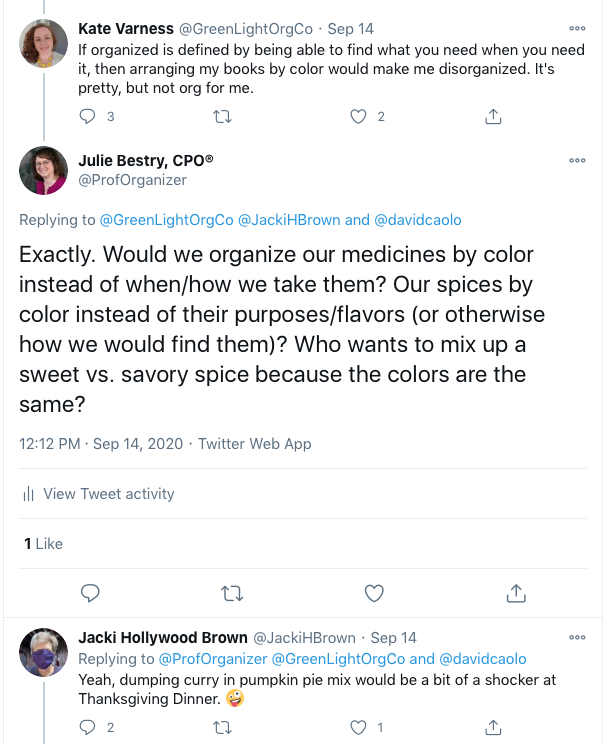
(Readers, if you like curry in your pumpkin pie, feel free to tell Jacki directly!)
Organize Away Frustration: Practice The Only Good Kind of “Intolerance”

This is the perfect week for you to take note of whatever frustrated you during the holiday season: a light system with too many broken bulbs, an artificial tree that has seen better days, a sense of obligation to send holiday cards to people who haven’t so much as liked one of your Facebook posts in a decade. Stop tolerating what doesn’t work for you, and if you don’t know the solution, seek help to find one.
Paper Doll Peeks Behind the Curtain with Superstar Coach, Author & Speaker Leslie Josel
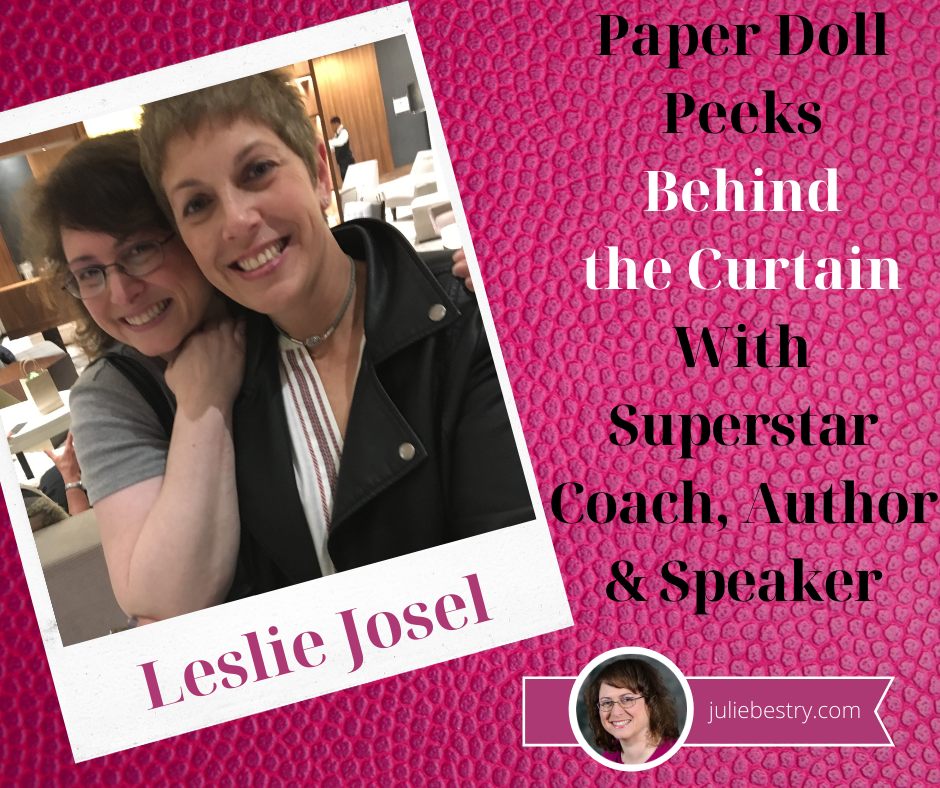
Our talk about 1980s sweaters may have been dated, but discussion of student procrastination is not. This fall was the first semester that was 100% in COVID times; even stellar students struggled, and “taking an incomplete” has become a common refrain. If you have (or are) a student, Leslie’s How To Do It Now, Because It’s Not Going Away should be on your bookshelf.
Organizing in Retrospect: A Confessional Look Back at 2020
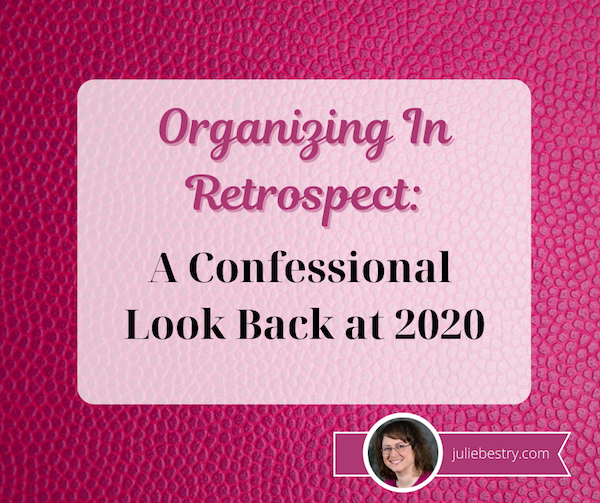
Writing this post, I realized I accomplished more than I realized. (Which would have been easy; when people asked what I’d been doing this year, I was often at a loss for words. “Missing my mom, my friends, and my travel plans, eating too much cheese, and craving Chinese food” seemed like an ineffective response.
This quiet lull before the new year is the perfect time to pull out your calendar and scan your To Do lists. Take notice of your achievements; in a year like this, it’s easy to forget small (and even not-so-small) victories. Ask your friends and loved ones to report back on the successes they recall from your year. Tally them up. Whether you use this in your next performance evaluation at work or just to buck up your self-esteem, remember that surviving this year intact is an accomplishment!
CLUTTER-FREE HOLIDAY GIFTS
In a Downton Abbey-themed post a few years ago, I told you about Give Back Box, a program whereby you could gather up the items your new holiday presents made redundant and easily ship them off to charity. This year, especially, when a touch-free donation option is especially useful, I encourage you to explore Give Back Box.
Clutter-Free Holiday Gifts for the Weird Year of 2020 (Part 1): New Twists on Old Favorites

For those of you looking for gifts of cooking classes, two highly praised options came in after deadline: King Arthur Baking‘s impressive calendar of interactive, online cooking and baking classes, and Milk Street‘s live-streamed and recorded, self-paced virtual classes. (If you give a cooking class gift to someone with whom you live, you get to eat the homework!)
Clutter-Free Holiday Gifts for the Weird Year of 2020 (Part 2): Giving Well, Giving Back

In addition to tangible gifts that give back to others, I wrote about charitable giving in your recipient’s name. Due to COVID, new tax laws let most taxpayers deduct cash donations of up to $300 made by December 31, 2020 when filing taxes in 2021 – even if you don’t itemize. (Note, this is a “per return” deduction, meaning married couples get the same $300 deduction as singletons. Consult your tax advisor.)
Clutter-Free Holiday Gifts for the Weird Year of 2020 (Part 3): Organizing Yourself & Others

Finally, I hope one of the gifts you give yourself is the time and opportunity to keep reading organizing and productivity advice here at Paper Doll.
Thank you, my dear readers, and have a happy, healthy 2021!
Clutter-Free Holiday Gifts for the Weird Year of 2020 (Part 2): Giving Well, Giving Back

Last time, we talked about finding 2020-friendly ways to give gifts of experiences that still keep everyone safe in this perplexing year. With the exception of yummy consumables, we mainly discussed intangibles. That’s because, as Cornell professor Thomas Gilovich’s 20-year study showed, we know that experiences are valued more deeply. They’re fleeting, so we don’t become inured to their charms. They’re personal – your trip to Disney World is not my trip to Disney World. And, to Paper Doll‘s mind, experiential gifts never weigh you down with obligation. You don’t have to store, vacuum, or dry-clean a visit to the theater or a day of mini-golf.
That said, please don’t think that tangible gifts automatically mean clutter. If someone wants and loves something, it won’t become clutter. But it’s possible to make a gift more than just not-clutter. What if your gift could not only please your recipients, but also make the world a better place?
2020 has been a hard year for everyone. Wouldn’t it be magnificent if we could soothe the plights of those whose 2020 was particularly difficult? Today, we’ll look at two ways to give well and give back: giving gifts that support those in need, and direct donation on someone’s behalf.
BUY ONE, GIVE ONE & GIVE BACK
Got a friend who is always on the phone? A tiny human with a lot of stuff to carry? Know anyone with cold heads or feet? (I mean, it is winter!) Know some readers? If you want to give well and give back, read on.
![]()
Popsockets makes decorative, round Pop-Grips you can stick on the back of your phone to make it easier to hold onto. (They also make mounts and digital wallets.) They flatten against your phone for a lean look, then “pop” out to let you grip them or to prop your phone on the desk.

Purchase one of their many designs, ranging from pop culture themes to sports to luminous colors, or design your own for your (or a friend’s) personal tastes. Even upload your business logo. PopGrips are interchangeable, so you can use whichever strikes your fancy that day.
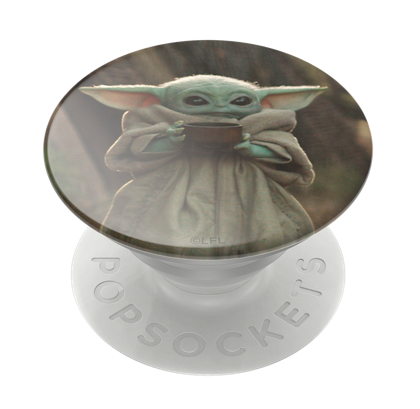
From an organizer’s perspective, Popsockets make a nifty gift to keep from dropping your phone. That’s organized! But they go step beyond with what they call Poptivism! When you purchase a Popsocket design or one you’ve created yourself, 50% of the cost is donated to a charity you select in any of nine categories, ranging from arts and culture and civic participation, to health and education, to human services and more.
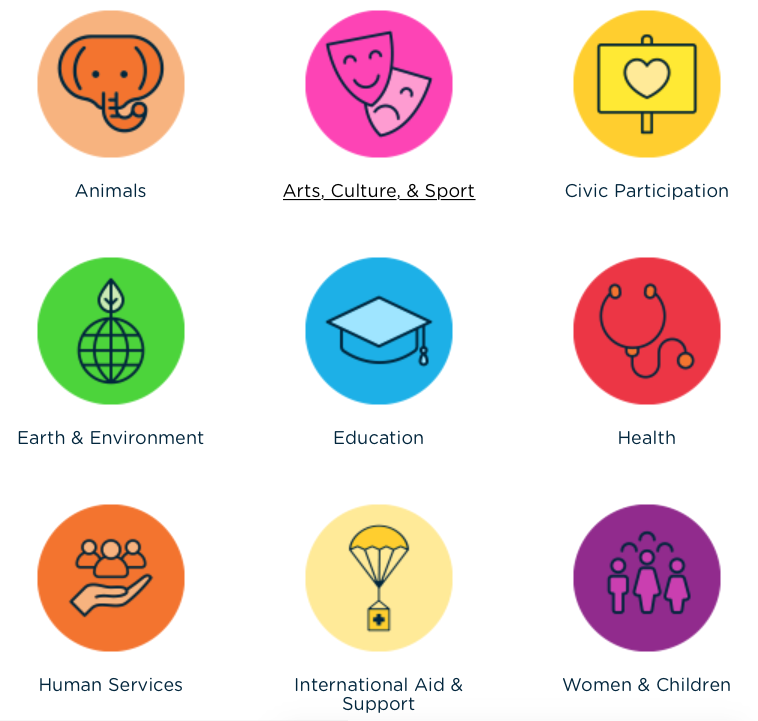
Read more about Popsockets’ corporate responsibility mission.

Bixbee makes backpacks (and lunch boxes, duffels, luggage, and sleeping bags) with an eye to the special ergonomic needs of tiny humans so they can carry and organize all of their “stuff” without getting weighed down.
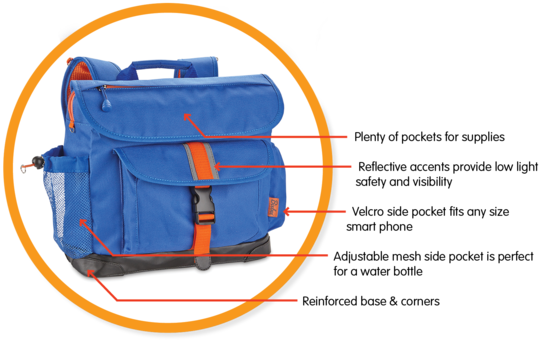
The bright and hardy backpacks are designed for the little tykes’ unique measurements and aesthetic tastes. The medium/large backpacks weigh only two pounds and use contoured, air-mesh, adjustable shoulder straps with a sliding sternum strap to distribute the horizontal load. Each backpack has an interior padded pocket to carry and protect a laptop or tablet from drops or bumps.
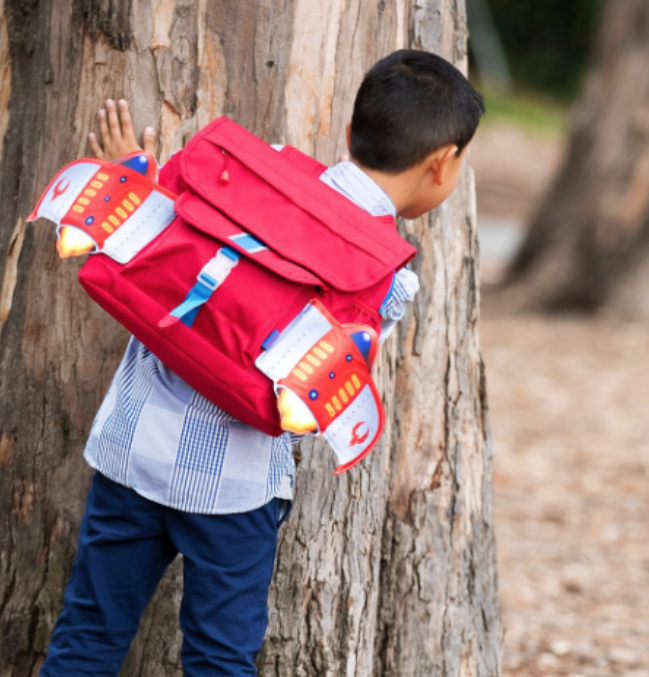
So, Bixbee makes fun gifts for kids, but they don’t stop there. Bixbee’s “One Here. One There.” social mission finds them collaborating with US and international non-profits serving children in need of access to education.
Save 30% on the entire Bixbee store for their Back-to-School “Winter Edition” sale. Use the code: BTSWINTER.
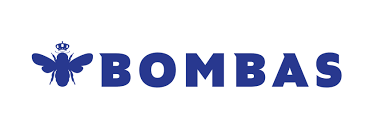
Bombas – You’ve probably heard of Bombas, especially if you listen to podcasts or satellite radio. The commercials are unavoidable! If you know nothing else, when you hear “Bombas,” you probably think “socks.”
Socks may not seem like an exciting holiday gift. When I was little, I’d pester my (more than a decade older) sister to tell me what she was getting me for Hanukkah, and eventually, exasperated with inventing fake clues, she’d tell me she was getting me socks. I was equal parts dubious and disappointed.
But you know what? Socks are great gifts! (I got pair of menorah-themed Hanukkah socks last week!) They don’t merely keep your feet warm and cozy, but they allow you to express your personality in small, fun ways. My personal favorites (whether for kids or adults) are in the Bombas Sesame Street line.

But the cool thing about Bombas is that for every pair of socks purchased, they donate a pair of socks to someone affected by homelessness. They have donated more than 40 million items to more than 2,500 community organizations to date. It’s the ultimate in “get one, give one.”
We all need socks, so they’re never clutter. If you pick well, they’re comfy, cozy, and cute…and you can give back to those who really need help.
Learn more about how the Bombas partnership with Sesame Street is bringing awareness to the issue of family homelessness and its impact on families.
When I told my best friend I was writing about gifts that give back, she told me that I had to write about Love Your Melon, one of her daughter’s favorite companies. (Yes, her daughter is the medical student I wrote about recently.)
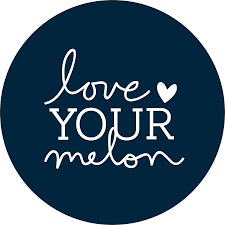
They make hats. (Pardon me, “beanies.”) Also, headbands, T-shirts, and blankets. Cute name. Cute stuff.

To be honest, I’d never heard of Love Your Melon, but I should have! Their brand is dedicated to giving a hat to every child battling cancer and supporting the fight against pediatric cancer. They give 50% of net (post-tax) profit from the sale of all Love Your Melon products to domestic and international organizations creating therapeutic experiences and funding charitable programming initiatives for children and families battling cancer. They’ve already disbursed more than $7 million and distributed 213,516 beanies.
(Because immunocompromised tiny humans can’t have visitors during the pandemic, Love Your Melon is also sending “Smiles Inside” boxes to hospitals. These people are good eggs.)
![]()
As you may have been able to tell from my three-part series on organizing your life to have more reading time, I’m a fan of books. So, I was delighted to learn that one of my favorite book-related apparel companies also gives back!
Out of Print has a mission to transform literary classics into apparel and accessories for bookish peeps. You and your recipients probably need (and want) T-shirts, sweatshirts, boxers, masks, scarves, and totes. Why not show off your literary style by buying from a company that donates books and supports literary programs around the world?
You probably have a Jane Austen fan on your list, someone who is always reading Maya Angelou, a Harry Potter aficionado, or someone who can’t get enough of Stephen King. From science fiction to British lit, from The Little Prince to 1984‘s Big Brother, Out of Print covers a lot of ground. Me? I’m having trouble deciding between T-shirts honoring Corduroy and Mike Mulligan and His Steam Shovel.
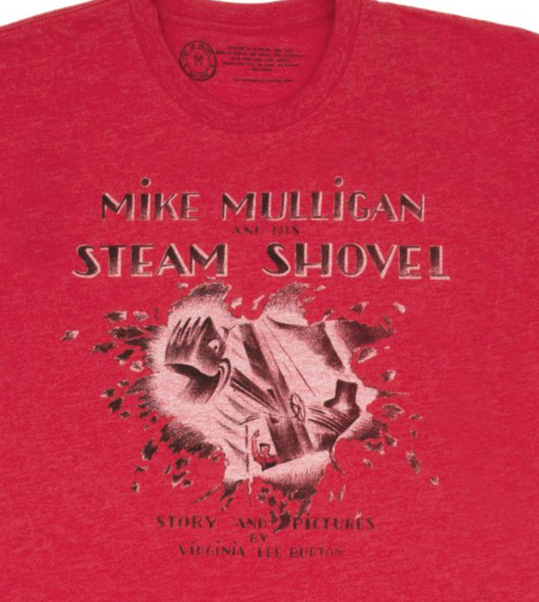
So, yes, as long as you’ll wear or use literary accessories, they won’t be clutter. But what about the philanthropic side of Out of Print? They’ve donated more than 3 million books to communities in need, and support a variety of literacy initiatives, including Words Alive and Liberation Library. Additionally, to support independent bookstores impacted by COVID, Out of Print donates a portion of their mask sales to the Book Industry Charitable Foundation (Binc).

Atoms makes sneakers – by all accounts, comfy and stylish ones – but that wasn’t enough to put them on my radar. Right around the beginning of the COVID pandemic, Atoms founders, Sidra Qasim and Waqas Ali, realized they could make masks. They reallocated Atoms’ production capabilities to produce masks that carried the same qualities as their sneakers. They designed them with an antimicrobial copper thread lining, and made them to be comfortable, breathable, and durable. Qasim and Ali pledged to donate one mask for each one sold, and to sell the masks at an affordable price.
Meanwhile, sometime in the spring, when people were saying, “You think maybe I should look into getting a mask?” Morning Brew, a daily business newsletter, recommended Atoms’ masks in its usual cheeky (no pun intended) style, and I took notice. At the time, they only had four colors, all on back order, and I had no idea what went into a good reusable mask, or even what a good mask price was. (I mean, did any of us know?)
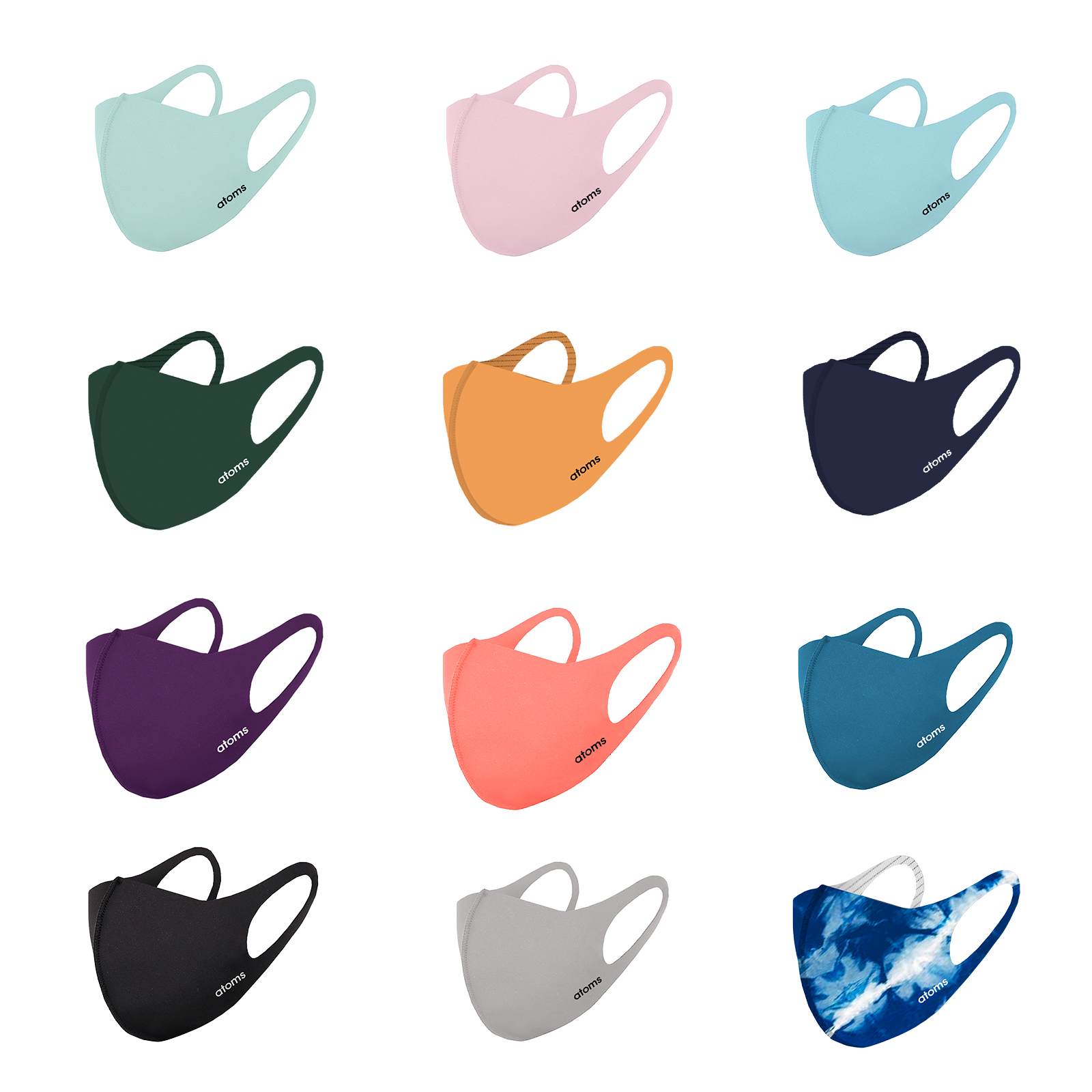
So, I bought a mask. Actually, due to some fumble-fingered clicking, I accidentally bought a too-small mask for my huge head and realized it right away. I emailed, but expected my inquiry would get lost in the mid-pandemic, out-of-office email onslaught. Instead, I got an reply from the delightful Ray, who switched my “small” to a size more befitting my noggin, and had a charming customer service experience. My masks are comfy, don’t bother my ears, and never wrinkle.
Anyway, remember Qasim and Ali’s promise to donate masks? They did it, at cost, and for every Atoms mask purchased, Atoms donates one to a non-profit organization in need. They’ve already donated over 300,000 masks to organizations around the country, including the New York City Housing Authority, the Milwaukee Center for Community Action, Colin Kaepernick’s Know Your Rights Camp, the King County Office of Emergency Management, the Yakima Valley Community Foundation, the United Sherpa Association, the RESIST COVID TAKE 6! campaign, and For Freedoms.
In any other year, masks would be a weird gift, but in 2020, they make sense.
(Oh, and if you do decide to buy a pair of their sneakers, you can use my referral code link to get $20 off.)
GIFTS OF CHARITY
Most of us like unwrapping something shiny and new, but there are special opportunities at the holidays to provide gifts to someone that can have even more meaning. Consider these impeccable, time-tested options:
Heifer International lets you give the gift of self-reliance. Your donation purchases livestock (a flock of chicks or ducks, a hive of honeybees, a share of a water buffalo, or any of a myriad of life-sustaining options), resources, and training to bring promise to hungry families and the opportunity for a better life, both internationally and here at home.
Giving a gift through Heifer International takes the stress out of shopping while putting the meaning back into giving. You can pick an animal or flock from the full gift catalog or take the quiz to find your perfect donation match. (I got Chelsea Chick, but I may retake it to get this cutie, Al Paca!)

There are also gifts for entire villages (like water irrigation pumps and community stoves, which, while not as adorable as animals, are every bit as vital.
This year, you can also give a tangible gift so the person in whose name you are giving chicks, or goats, or ducks gets to unwrap something. Heifer is selling a variety of items, including:
Confetti Farm Animal Ornaments
Alpaca Blend Hand-Knitted Ornaments
Heifer Plush Animals
Heifer Guatamalan Animal Clutches
La Promesa Guatemalan Coffee
Eco Leather Passport Wallet
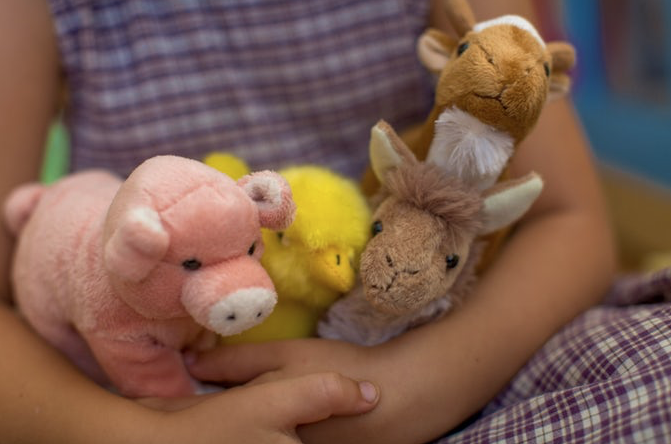
Feeding America, formerly called America’s Second Harvest, is the nation’s largest charitable hunger-relief foundation, serving children, senior citizens, the working poor, victims of disasters, and others experiencing food insecurity.
Feeding America supports more than 60,000 local programs, including food pantries, soup kitchens, emergency shelters, after-school programs, and Kids Cafes.
Habitat for Humanity is a worldwide, non-profit, non-denominational housing organization that builds simple, decent, affordable houses in partnership with those who lack adequate shelter. Houses are sold at no profit, with no interest charged on the mortgage, while homeowners and volunteers build the houses under trained supervision.
As a holiday or other gift, you might promise a loved one that you will work a certain number of hours in service to the cause (once the pandemic is over and it is safe to do so), and you could make a monetary donation in someone’s name and Habitat will send a gift acknowledgement.
Mazon: A Jewish Response to Hunger has a variety of advocacy initiatives, including fighting hunger among veterans and military families, eliminating barriers keeping senior citizens from nutrition programs, improving food security in Native American communities, and more. You can support their efforts with one-time or ongoing donations, or help fund-raise for events.
RIP Medical Debt – Did you know that 66% of bankruptcy filings are due to medical debt? Donations to this cause help wipe out medical debt and help improve the financial stability of vulnerable members of the community, including the elderly, veterans, and those near or at poverty level.
Modest Needs provides short-term emergency assistance. Modest Needs vets the applications, presents the stories of the applicants to prospective donors, and pays donations directly to the vendors or creditors (for medical bills, auto repairs, utility companies, etc.)
CHARITY GUIDANCE
Not sure where to donate? It’s impossible to evaluate every non-profit yourself to verify their operations for financial health, transparency, and accountability. Get some guidance:
Charity Navigator is the gold standard for researching the financial health and accountability of any charity you may be considering.
GiveWell – Instead of focusing solely on financials, assessing administrative or fundraising costs, GiveWell’s research aims to determine how much good a given program accomplishes per dollar spent. Rather than breadth, they focus on the few charities that stand out most (by their criteria) to “find and recommend high-impact giving opportunities.”
CharityWatch – Among other efforts, this charity watchdog evaluates social welfare organizations that are not eligible to receive tax-deductible contributions and religious charities that are exempt from filing tax forms.
GiveBlck is an easy-to-use, comprehensive database to advance racial equity in charitable giving. It showcases the diversity of causes among Black-founded non-profits. It does not evaluate, but provides a compendium of which charities serve the needs that echo what matters most to you or your recipients.
They say it’s better to give than to receive. How much better, then, it must be to give and to give back?
They say it's better to give than to receive. How much better, then, it must be to give and to give back? Click To TweetPaper Doll Organizes Boxing Day Downton Abbey-style with Give Back Box®
You’ve got boxes, right? After a weekend of giving and receiving gifts, you’re likely surrounded by boxes. Everywhere you turn, boxes. It’s practically a Day of Boxing! Well, actually…
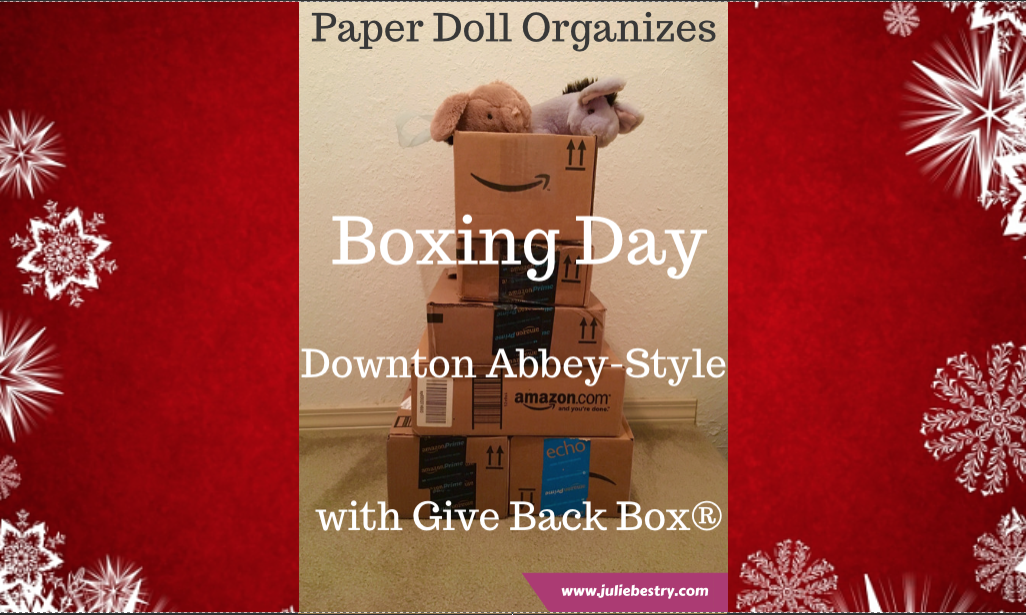
Boxing Day, observed on December 26th, the day after Christmas (and this year, the second day of Hanukkah), is a holiday popularly celebrated in the UK and various Commonwealth nations, many of which used to be British colonies. The history of the holiday is complex and widely debated, but traditionally, servants and tradespeople were given Christmas boxes on the day after Christmas, when they were granted leave to visit their own families and did not have to work. How very Downton Abbey of them.
Before you move along to another post, affecting a posh accent and saying, “I’m going upstairs to take off my hat,” I’d like to suggest a much more rewarding way to observe Boxing Day.
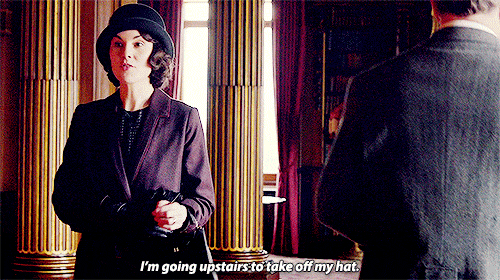
Give Back Box®, through a partnership with Amazon, Overstock.com, Ann Taylor, REI Co-Op, and more than a dozen other retailers, has found a solution that allows you to encourage yourself to pare down your excess possessions, bless others with donations of your largesse, and get those cardboard shipping boxes out of your house, all in one fell swoop.
![]()
THE MISSION STATEMENT
The purpose of Give Back Box® is to provide an effortless and convenient method of donating your used household items. Give Back Box not only provides an easy way to be part of a truly good cause, it also allows cardboard boxes a second life by recycling them and keeping them away from landfills to help improve our environment. So this is an all-round CSR & Sustainability solution that costs you literally nothing.
THE PROCESS
- Take your Amazon (or any other retail partner’s box), and empty out the goodies you’ve received. (You can also use a plain cardboard box, if you like.)
- Fill the box with donations of clothing, shoes, and various household goods. But please, no liquids, electronics, ammunition, or fragile or hazardous things! (And do check the pockets for any train tickets that might prove you innocent of murder.) Then seal up the package.
- Print a free pre-paid shipping label from Give Back Box’s site and affix it to the box. The cost is covered by Give Back Box’s partner retailers, most of whom have special Give Back Box pages on their sites, too.
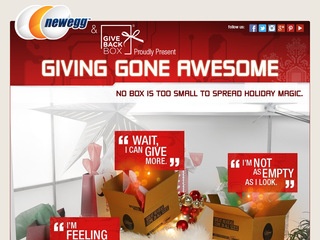 There’s no weight limit, so you can fill the box to the brim — and print as many labels as you need.
There’s no weight limit, so you can fill the box to the brim — and print as many labels as you need.
- Now, just send the package to Goodwill via UPS or the United States Postal Service at any UPS Store or post office, all at no cost to you. You can even request a free USPS pick-up of your package at your home, if the weather outside is not so delightful and you’d rather lounge about and have your lady’s maid, Anna, serve your meals in bed.
THE BENEFITS
Give Back Box box has a variety of benefits — personal, social, economic, and environmental.
You’ll make donations more often — You know you’re busy. You know your house is full of things you don’t use, don’t wear, or don’t want. (Honestly, what was Aunt Rosamund thinking?) You want to donate more things and more often, but the truth is that every time you find something in your home that you want to donate, you set it aside and forget about it. Maybe you have a donation station in your home, with the pile getting bigger and bigger, but it practically takes an act of Congress to get the donations out of your house, into your car, and to whatever non-profit you choose.
By making it free and convenient, Give Back Box prompts you to think about what you can let go of every single time you receive a box from one of their partner retailers.
Boom! There’s your habit! Get a box of stuff? Give a box of stuff!
That’s good for you, and it’s good for all the work that Goodwill does, providing job training and putting people to work in the local community. And people who want and need what you no longer have space or time to manage reap the benefits, too!
It’s also sustainable. About 30 million tons of retailers’ cardboard box material is zooming around the earth each year. By following the principles of “reduce, reuse, and recycle,” Give Back Box and its partners are helping you clean out your house and helping us all clean up the environment.
Even the Dowager Countess would be excited!
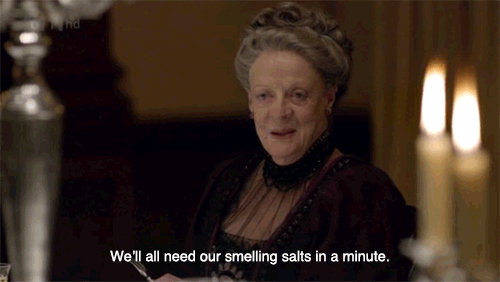
Still have questions? Read through the Give Back Box page of frequently asked questions, and check out this little video.


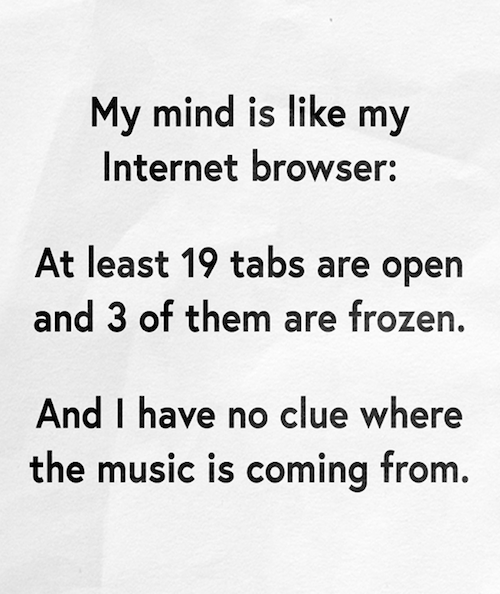
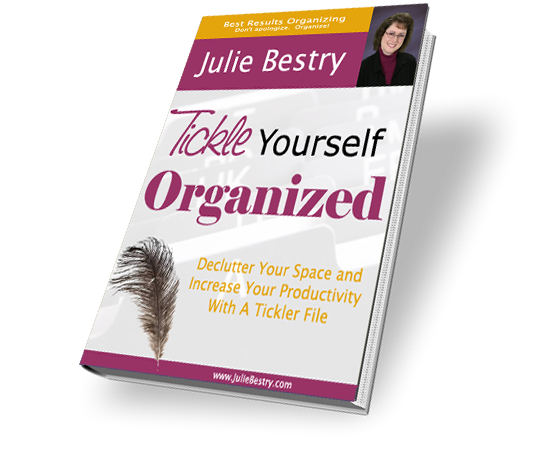







Follow Me